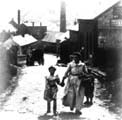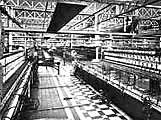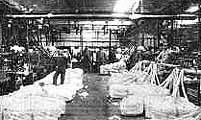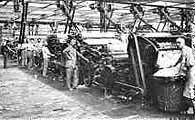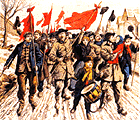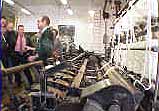Museum
of Textiles & Social
Life,
Fourmies Mill Town relives its
past Watching the clatter of the old textile machines making
wool almost faster than your eye can see takes you back to
when Fourmies was a town of woollen mills, the biggest
centre in France for spinning woollen yarn. Going round the Museum, you see displays, objects and old
photos - that show you what it was really like working in
those steamy sweatshops for long hours and little pay.

part of the Fourmies-Trelon
Ecomusée
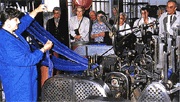
Demonstration of cloth weaving machine - at Museum of
Textiles & Social Life, Fourmies
Clogs and shawls in a French country town?
|
The Story of how Fourmies became the
centre of French woollen industry Napoleonic wars |
|
|
Nineteenth century woollen
boom The railway arrived in Fourmies in 1869, bringing cheapcoal supplies. The mills switched to steam, but water from the old mill-ponds was still needed to fill the boilers of the steam-engines, and to wash the wool. |
|
|
The Famous Strike |
|
|
First World War and
after This strength helped the mills survive the
1930'sDepression - in 1949 the Fourmies mills made 85% of
French wool. |
|
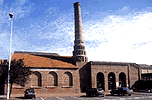 Fourmies Textile Museum |
1950s industrial crisis Part of the region's
Ecomusée |
|
|
|
|
Industrial revolution in France Water-power & watermills Windmills Textile industry back to top |
|
|
|
|
|
